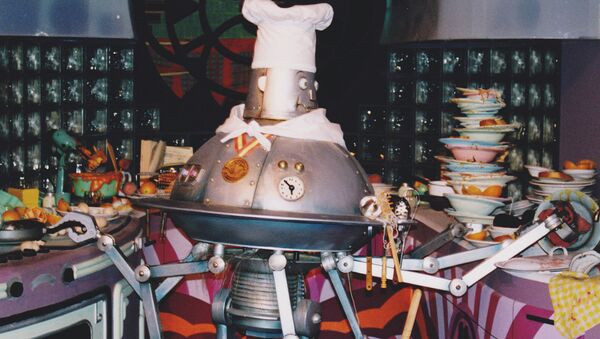As more and more mundane tasks were automated, robots became more complex, with more powerful hardware and software allowing them to perform tasks that require speed, finesse and efficiency. Rodney Brooks, Australian robotic engineer, entrepreneur, founder and former Chief Technical Officer of iRobot, outlined the trend:
I see robotic technology getting rid of the dangerous, the dirty, and the just plain boring jobs. Some people say, 'You can't. People won't have anything to do.' But we found things that were a lot easier than backbreaking labor in the sun and the fields. Let people rise to better things.
Rodney Brooks is a name to remember. He founded iRobot, the company most known for their Roomba vacuum cleaner robot. It became pretty much a generic trademark as people tend to call any vacuum cleaning robot Roomba.
Cleaning robots is, while currently the most popular, not the only application of domestic robots. Previous attempts to popularize domestic robots were made several decades ago. For example, the Hero (Heathkit Educational Robot), launched in 1982, featured light, sound, and motion detectors and even a sonar; it was also outfitted with an optional arm mechanism and a speech synthesizer. It couldn’t really perform many tasks and it was primarily used for educational or entertainment robots. High costs and low functionality prevented robots from becoming mainstream until the last several years. In 2007 Bill Gates, founder of Microsoft, saw the potential of the fledgling industry:
What I really have in mind is something much more contemporary: the emergence of the robotics industry, which is developing in much the same way that the computer business did 30 years ago. Think of the manufacturing robots currently used on automobile assembly lines as the equivalent of yesterday's mainframes.… as I look at the trends that are now starting to converge, I can envision a future in which robotic devices will become a nearly ubiquitous part of our day-to-day lives. I believe that technologies such as distributed computing, voice and visual recognition, and wireless broadband connectivity will open the door to a new generation of autonomous devices.
Most current domestic robots are simplistic – such as Roomba. There is a growing trend of creating more complex ones — some are connected to Wi-Fi home networks and are autonomous to a high degree. Domestic robots can help the disabled and the elderly, providing basic services and even social interaction.
Rodney Brooks summarized some of the challenges of house robots and robotics in general:
Two big questions that people ask me are: if we make these robots more and more human-like, will we accept them — will they need rights eventually? And the other question people ask me is, will they want to take over?
These two questions may be regarded as more or less philosophical at this time – after all, we’re quite far away from developing true artificial intelligence – and without it any computer, any robot, regardless of how impressive, is still machine that cannot do anything more than it was programmed to do or to learn how to do.

